Constantinos Hoursoglou on his anthropocentric design
DS.WRITER:
Vasilis Xifaras
Central Image: MB&F Ecrin HM7. | Photo: Nikos Alexopoulos
Having studied industrial design in England and worked for many years in Greece and abroad, Constantinos Hoursoglou is active in the field of object design through his own studio (chd industrial & product design) founded by him in 2002 but also through other, collaboration-based studios. He now lives in Geneva where, along with Alban Thomas, he created CHAT & SA in 2015. It’s a studio that deals with graphic design, creating exhibitions and objects as well as developing design strategies. At the same time, he is the Director of the BA Product Design programme at IPAC Design Genève, imparting his interest in design strategy and design thinking.
The character of CHAT & SA centres around humans and their constantly changing needs, assuming that designers should be able to predict potential changes, contributing to the creation of re-adaptable objects. Following a similar philosophy, Constantinos Hoursoglou and Thanassis Babalis have founded the brand Shibui and together they create unique objects made from natural materials. Their goal is to create an accessible and functional design, with elegant and simple aesthetics, great durability and attention to detail.
Constantinos himself will tell us more about these different endeavours.
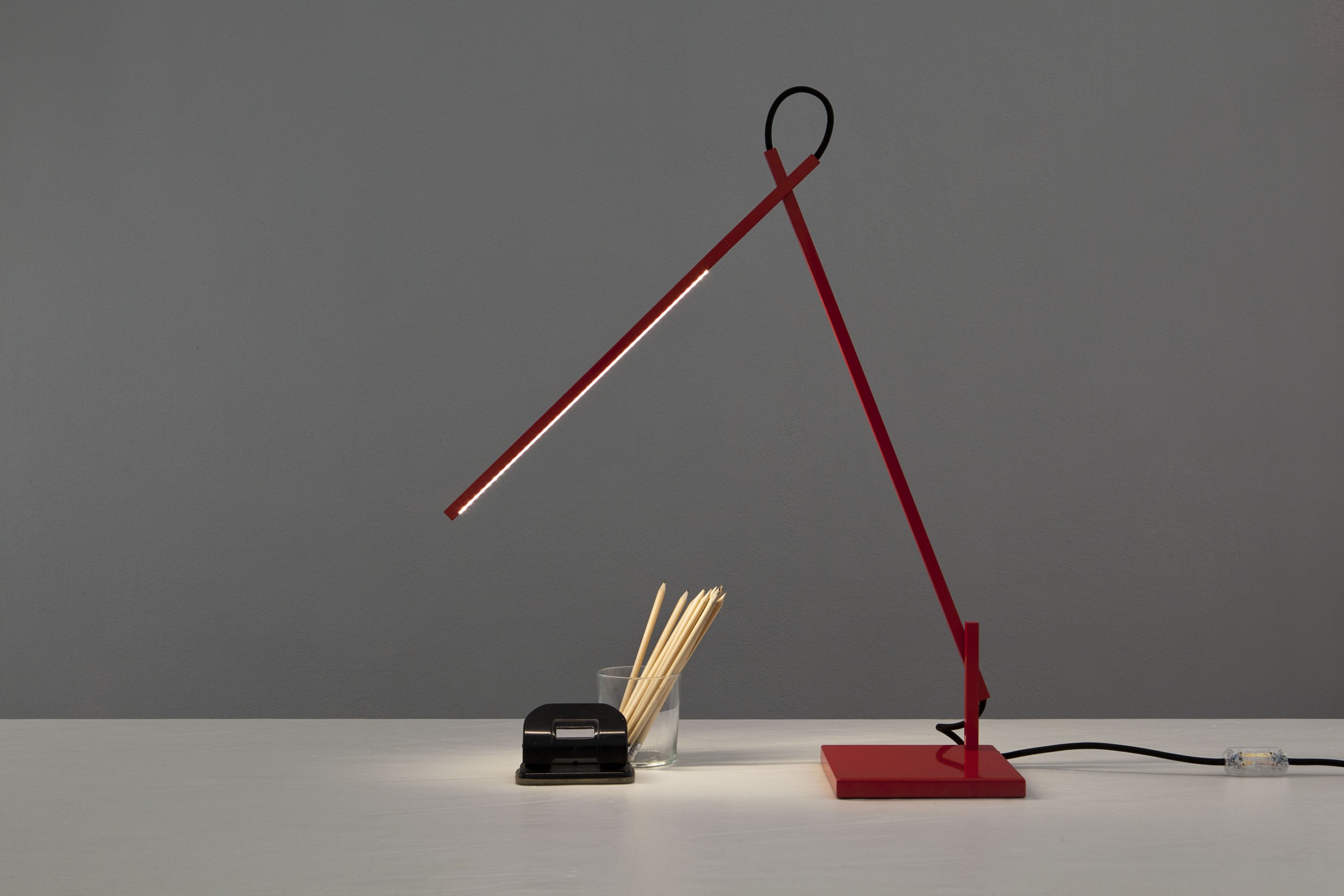
Lamp LineLight | Photo: Nikos Alexopoulos
The award-winning LineLight lamp (Red Dot Design Award) seems to align with the philosophy of CHAT & SA, even though it was launched in 2011. How did this faith in the adaptability of design come about?
I think LineLight was the beginning of this design approach. I chose to become a designer because I believed in the democracy of Industrial Design, the principle that, through the right form of design, we can improve our lives on every level: economic, aesthetic, emotional and ecological. Industrial Design developed as a consequence of the Industrial Revolution but “lost its way”, in my opinion, at the beginning of the 21st century when it became fashionable and a trend. Design died when it started being created “for design’s sake” but that is another story, of sociological nature…
LineLight wasn’t designed on commission but was the result of a personal quest of mine for giving form to something intangible, like light, using minimum materials. I try to stay true to this design principle because when, for a period of time, I tried to design for aesthetics or impressing, I lost any desire to design. On the other hand, it is very difficult today, where everything is about image and impressions, to succeed with products that demand time from the user, to experience and love them because they provide something and not because they add to their image or integrate them into social groups. Design is mass in its production but very private and emotional in its creation and use. It may be mass-produced by robots, but it's created by people with feelings for people with feelings.
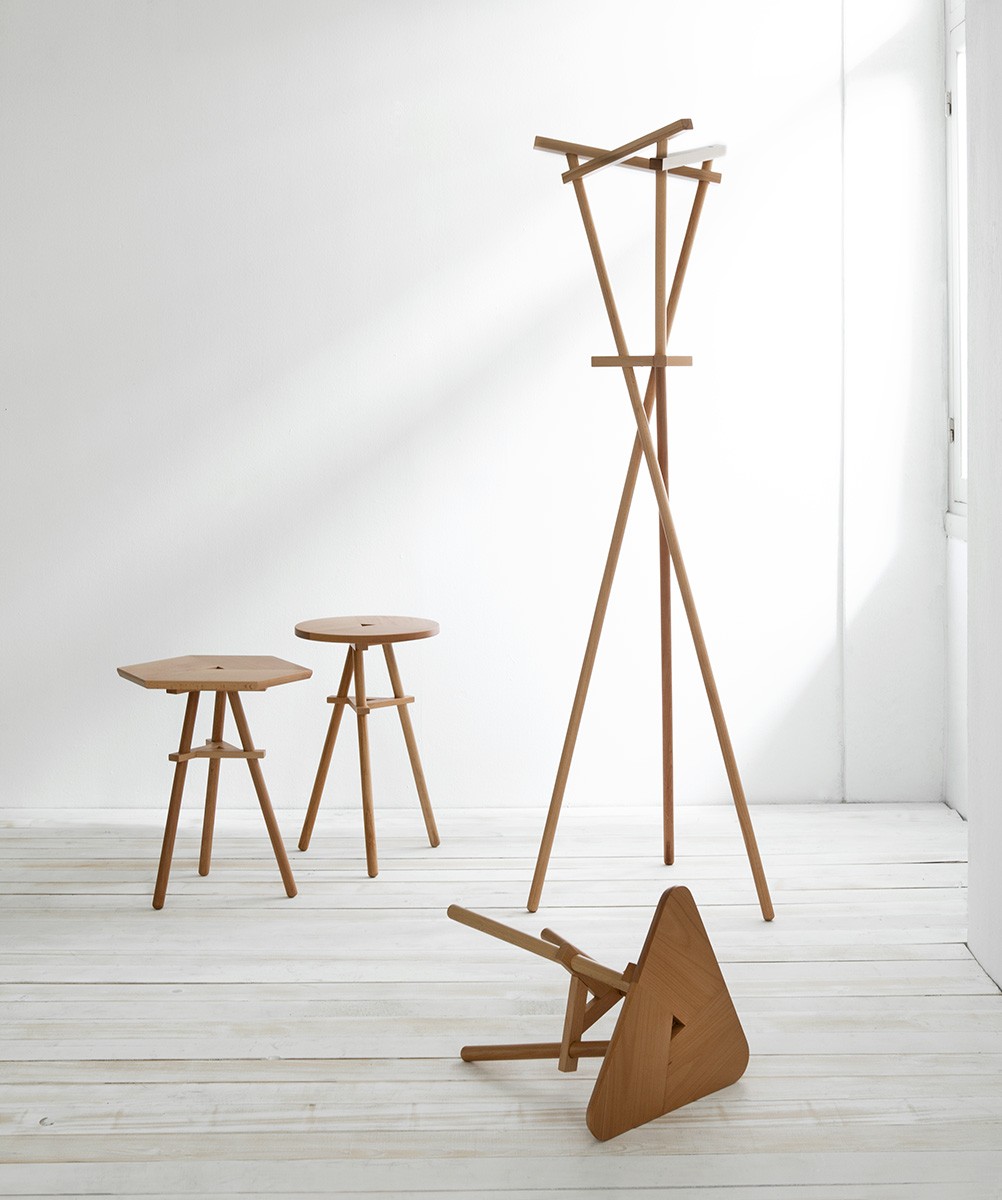
36 | Photo: Nikos Alexopoulos
For the “36” objects collection you used a single material, wood, taking advantage of the warmth it can give to a space. How do you generally choose the materials for your design? How do you incorporate experimentation into the design process?
The materials implement the ideas since they give form to them, weight to intention, and texture to emotion but they are also the ones that answer to the technical needs of an object. It’s this relationship with an object’s raison d'etre that defines everything, in my opinion. The aesthetics, in my way of designing, do not define the evolution of creation. The function and environment that the object is destined for are a priority, the beginning and the end is the daily relationship with the user and not the image, and to understand this relationship one has to experiment, try new approaches, and new materials. The material can be the starting point of the design process, since it sets its own limits and design issues, triggering experimentation that will overcome these limits or highlight them.
Design without experimentation does not exist, otherwise, we repeat what has already been established… I always try to find different ways of doing something, not for the sake of being different but to improve it or add value to it. If you don't try, if you don't make mistakes, if you don't experience the object yourself in the conditions it will be used, you won't learn, and you won't find new ways. Without experimentation, there is no error and without error, you cannot find what is right.
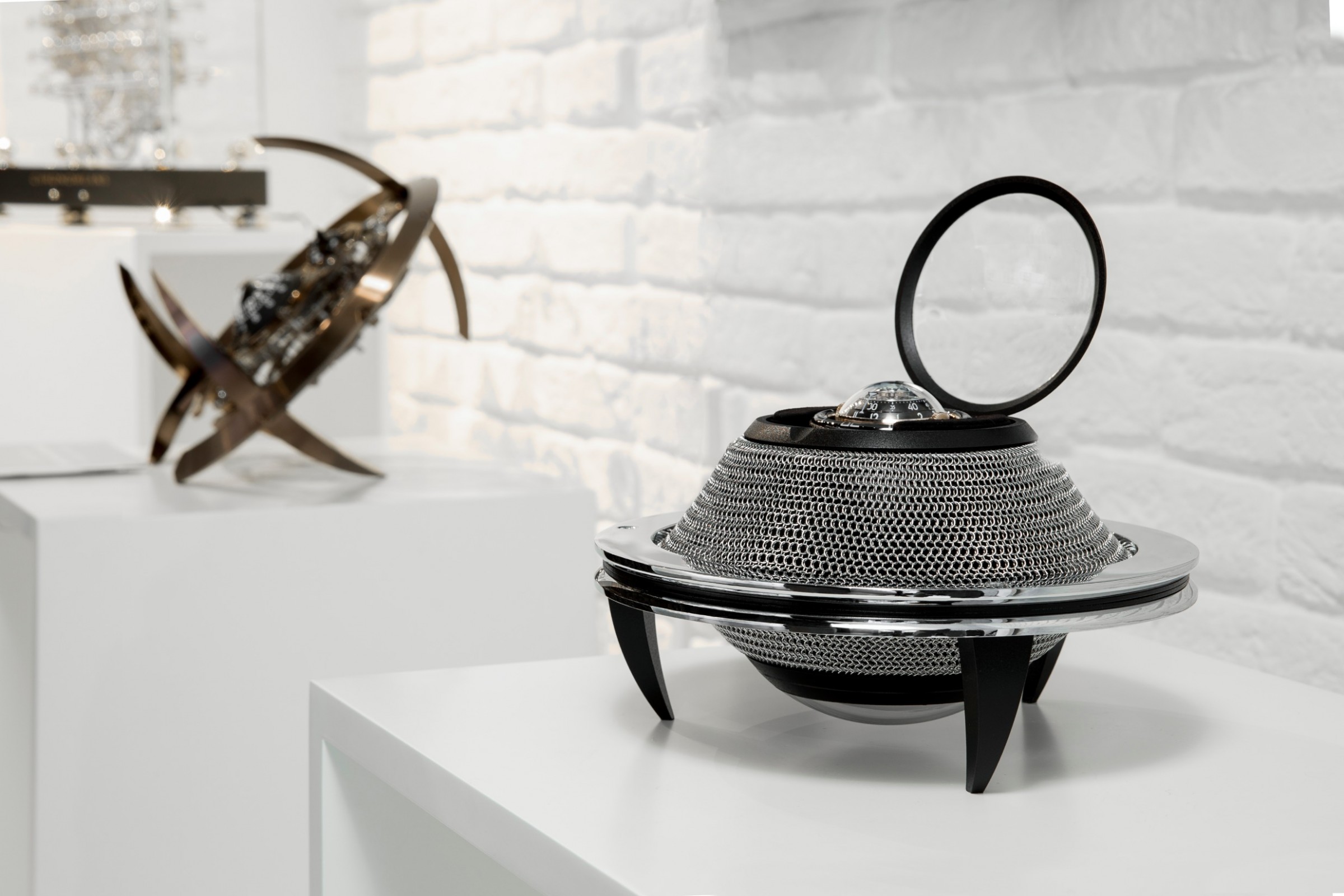
MB&F Ecrin HM7. | Photo: Nikos Alexopoulos
From where do you draw inspiration for a concept? In the noteworthy «MB&F Ecrin HM7» packaging design you were influenced by the shape of submarines and the look of scuba diving uniforms.
The inspiration for each project comes from three simple questions posed in the beginning: “what?”, “why?”, “for whom?”. By giving honest answers to these three questions you open infinite paths of creation.
What? a box for a watch. What box? What watch? etc.
Why? To protect the watch, to showcase the watch, to make it collectable, to showcase the company or to show how good a designer I am? etc
For whom? For the watch, for the company, for the user or for me? etc.
And again we ask “what”: What does each person expect? What protects the watch? What must the box represent? etc
These three questions generate answers that require design solutions. A good designer is distinguished for his ability to find these solutions and the way to combine them.
There is no inspiration in nothingness, even if you can answer these questions. The designer is a sponge, absorbing and filtering information in every living moment. When I was a kid, I was watching a documentary by Cousteau and the image of the diver and his metallic protective uniform among the sharks was imprinted and stored away in my mind until it “emerged” again, many years later, as a design element for the creation of a protective box for a diving watch. Inspiration goes hand in hand with curiosity, with the thirst to learn, see and understand why you like or don’t like some things. When you are full of experiences, images, tastes, and sounds (and you don't stop searching), inspiration is permanently there, just waiting for a trigger to rush out.
We very much thank Constantinos Hoursoglou for imparting to us how he shapes his unique approach to design.
hoursoglou.com | chatsa.ch | shibui.ch




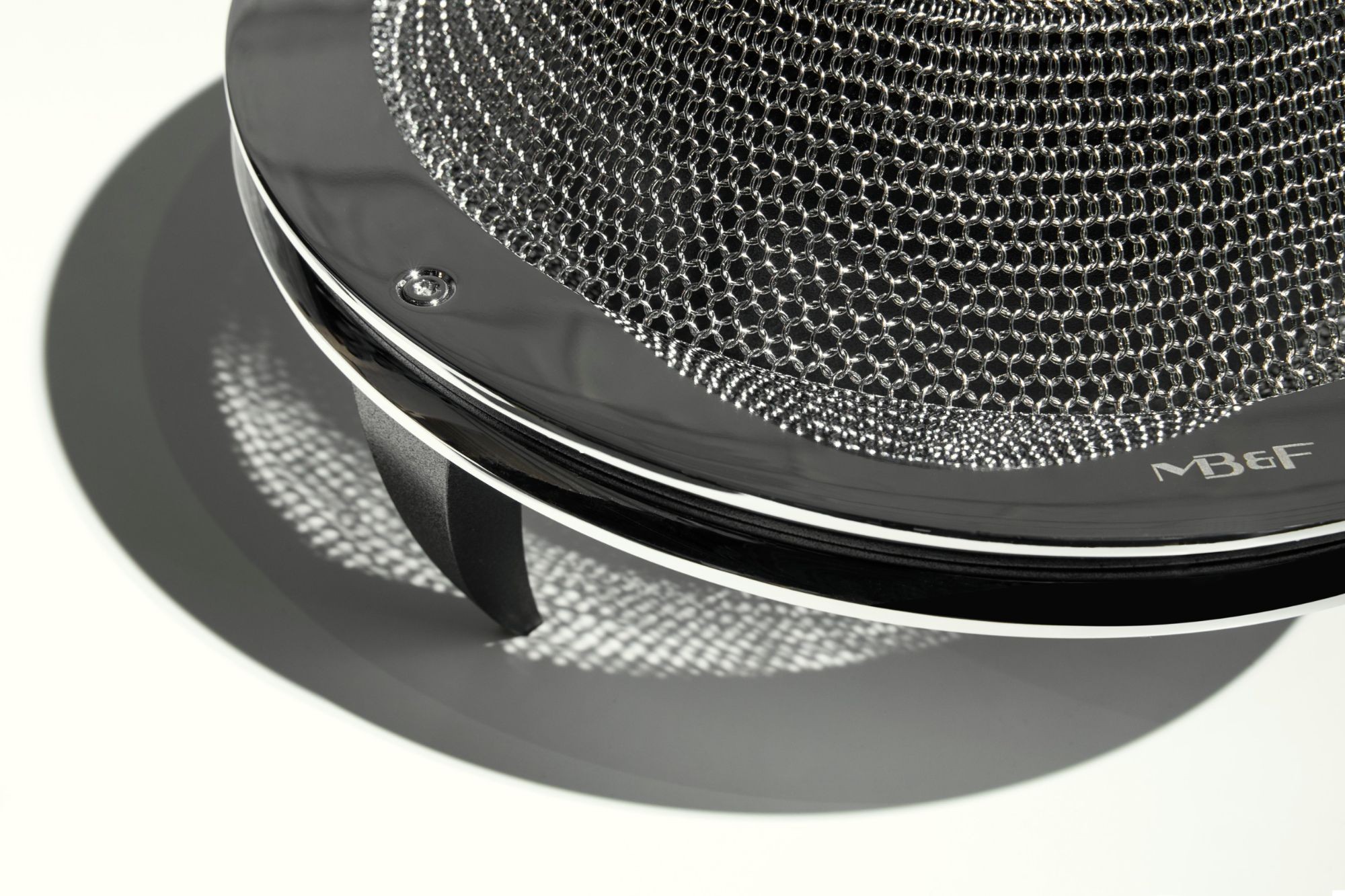
.jpg)
.jpg)
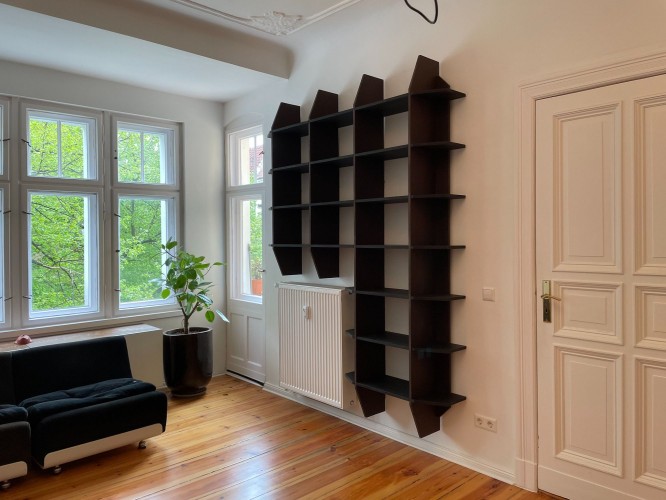
.jpg)